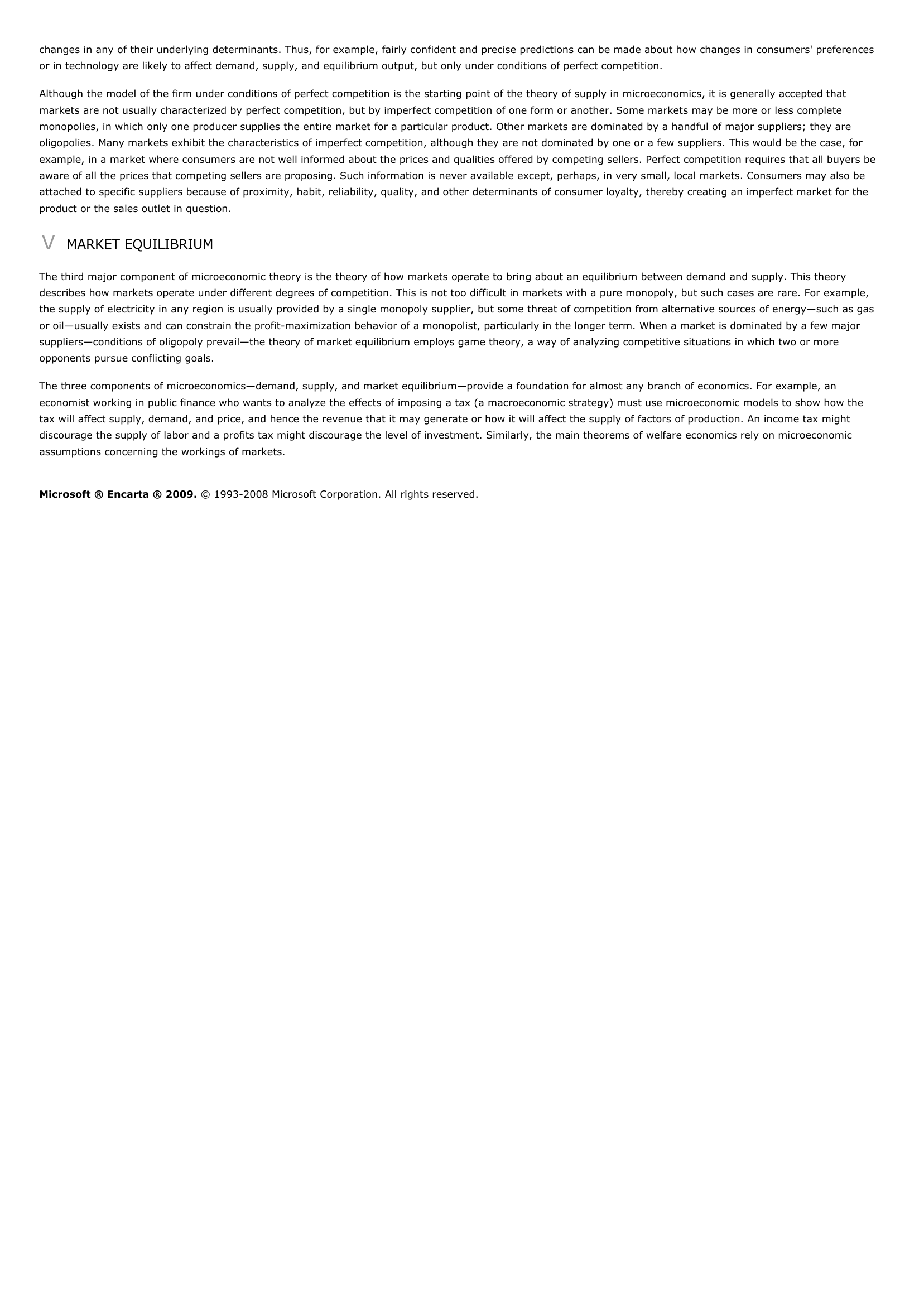Microeconomics.
Publié le 10/05/2013
Extrait du document
«
changes in any of their underlying determinants.
Thus, for example, fairly confident and precise predictions can be made about how changes in consumers' preferencesor in technology are likely to affect demand, supply, and equilibrium output, but only under conditions of perfect competition.
Although the model of the firm under conditions of perfect competition is the starting point of the theory of supply in microeconomics, it is generally accepted thatmarkets are not usually characterized by perfect competition, but by imperfect competition of one form or another.
Some markets may be more or less completemonopolies, in which only one producer supplies the entire market for a particular product.
Other markets are dominated by a handful of major suppliers; they areoligopolies.
Many markets exhibit the characteristics of imperfect competition, although they are not dominated by one or a few suppliers.
This would be the case, forexample, in a market where consumers are not well informed about the prices and qualities offered by competing sellers.
Perfect competition requires that all buyers beaware of all the prices that competing sellers are proposing.
Such information is never available except, perhaps, in very small, local markets.
Consumers may also beattached to specific suppliers because of proximity, habit, reliability, quality, and other determinants of consumer loyalty, thereby creating an imperfect market for theproduct or the sales outlet in question.
V MARKET EQUILIBRIUM
The third major component of microeconomic theory is the theory of how markets operate to bring about an equilibrium between demand and supply.
This theorydescribes how markets operate under different degrees of competition.
This is not too difficult in markets with a pure monopoly, but such cases are rare.
For example,the supply of electricity in any region is usually provided by a single monopoly supplier, but some threat of competition from alternative sources of energy—such as gasor oil—usually exists and can constrain the profit-maximization behavior of a monopolist, particularly in the longer term.
When a market is dominated by a few majorsuppliers—conditions of oligopoly prevail—the theory of market equilibrium employs game theory, a way of analyzing competitive situations in which two or moreopponents pursue conflicting goals.
The three components of microeconomics—demand, supply, and market equilibrium—provide a foundation for almost any branch of economics.
For example, aneconomist working in public finance who wants to analyze the effects of imposing a tax (a macroeconomic strategy) must use microeconomic models to show how thetax will affect supply, demand, and price, and hence the revenue that it may generate or how it will affect the supply of factors of production.
An income tax mightdiscourage the supply of labor and a profits tax might discourage the level of investment.
Similarly, the main theorems of welfare economics rely on microeconomicassumptions concerning the workings of markets.
Microsoft ® Encarta ® 2009. © 1993-2008 Microsoft Corporation.
All rights reserved..
»
↓↓↓ APERÇU DU DOCUMENT ↓↓↓

































